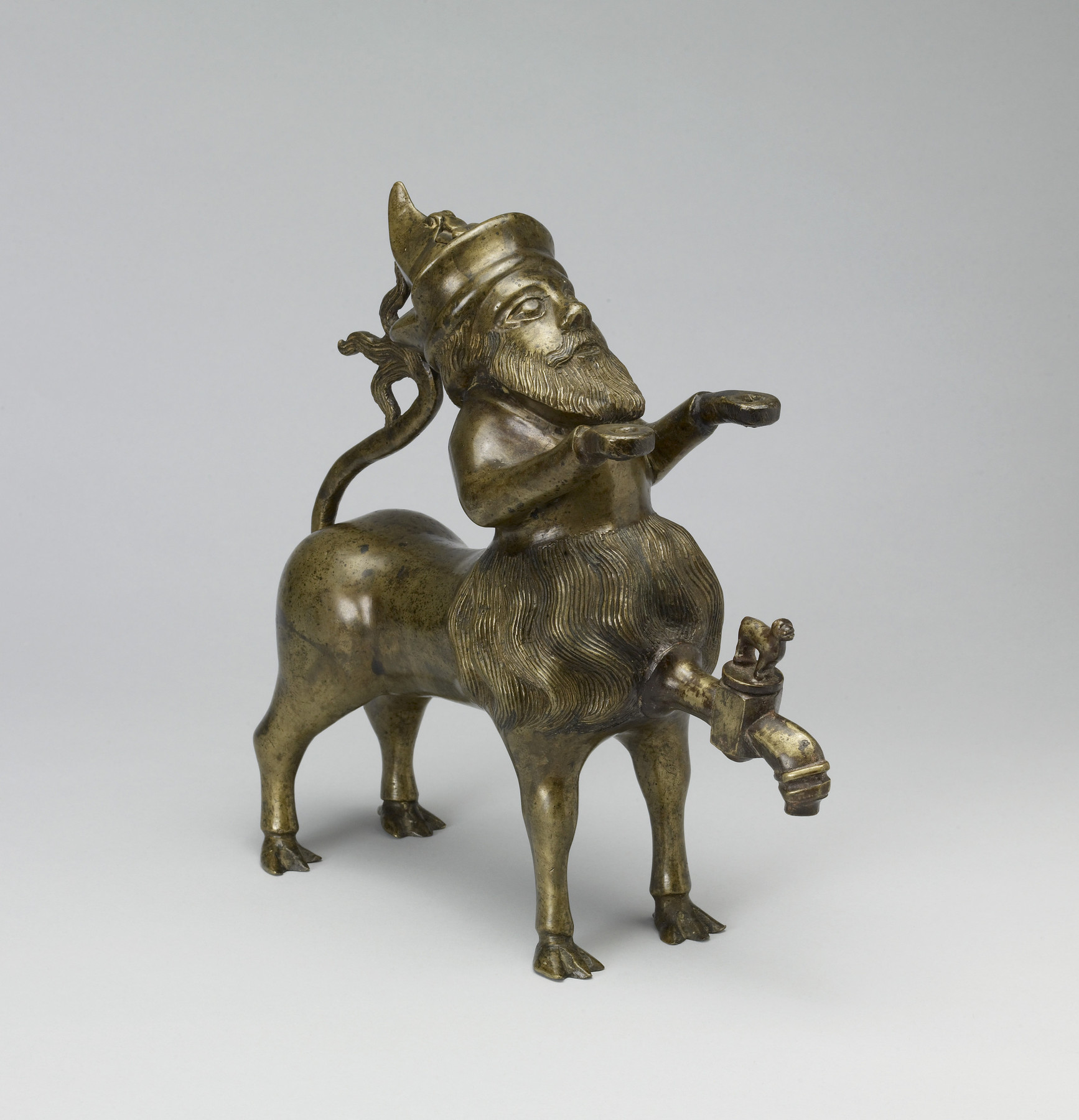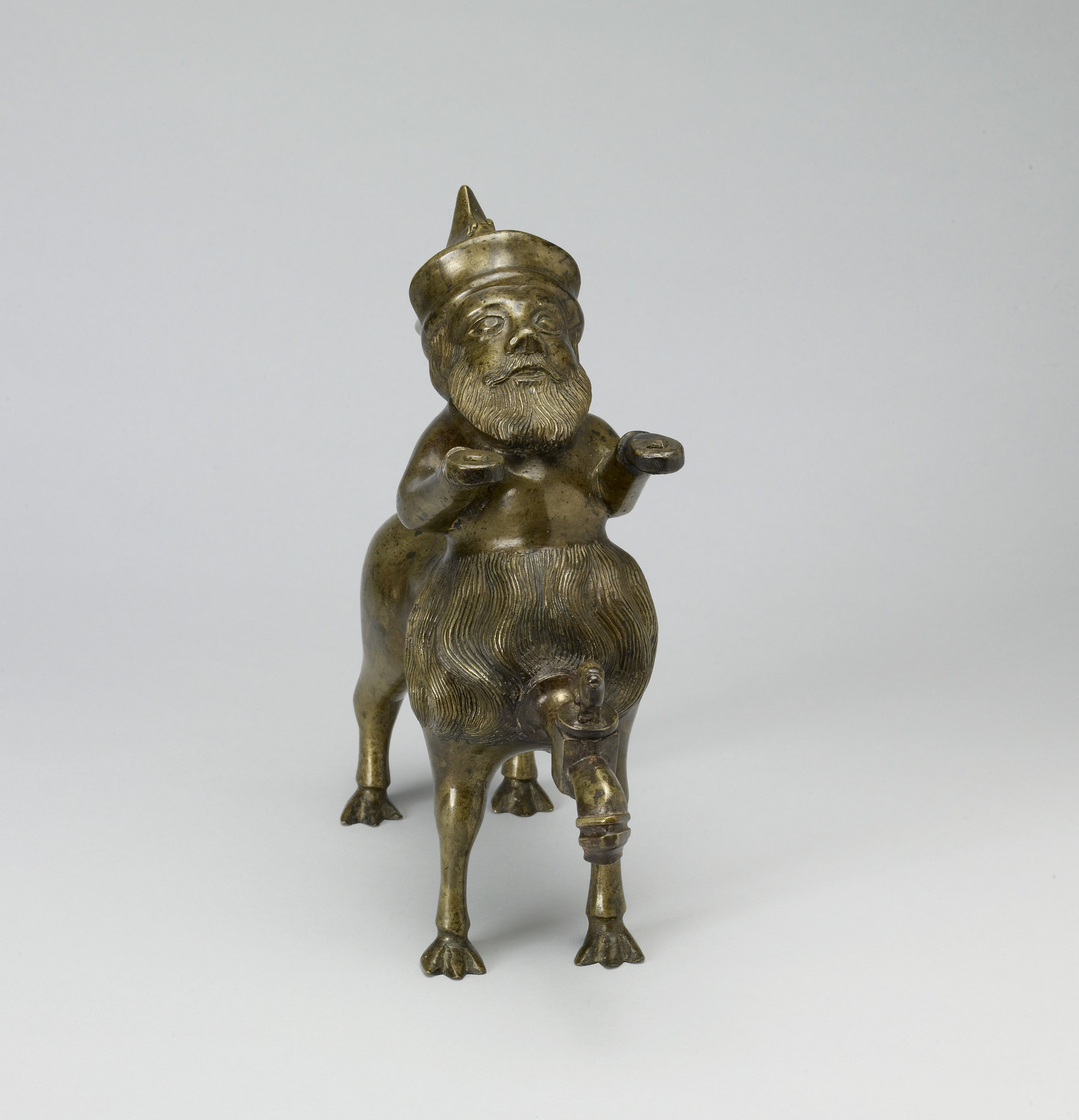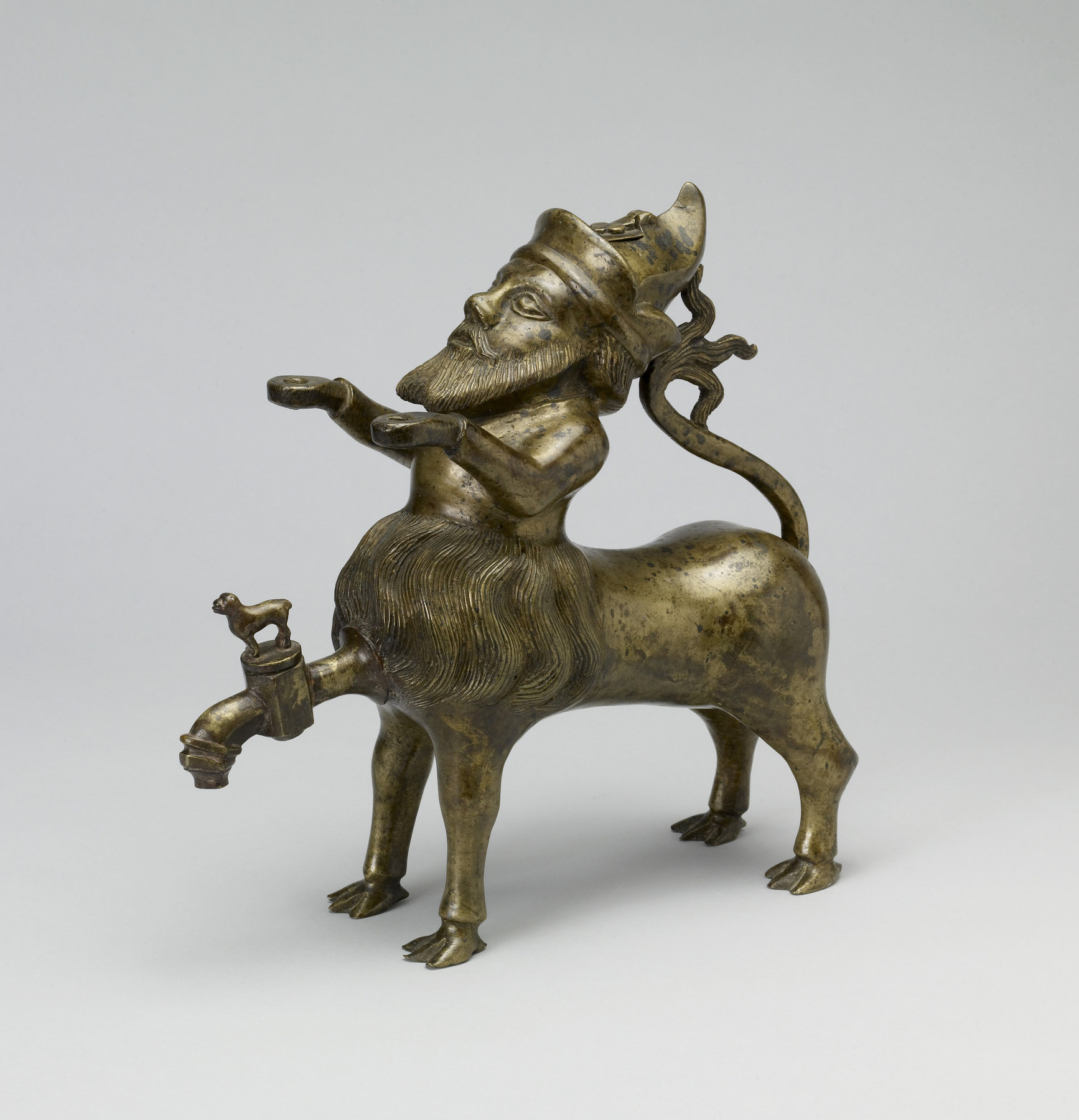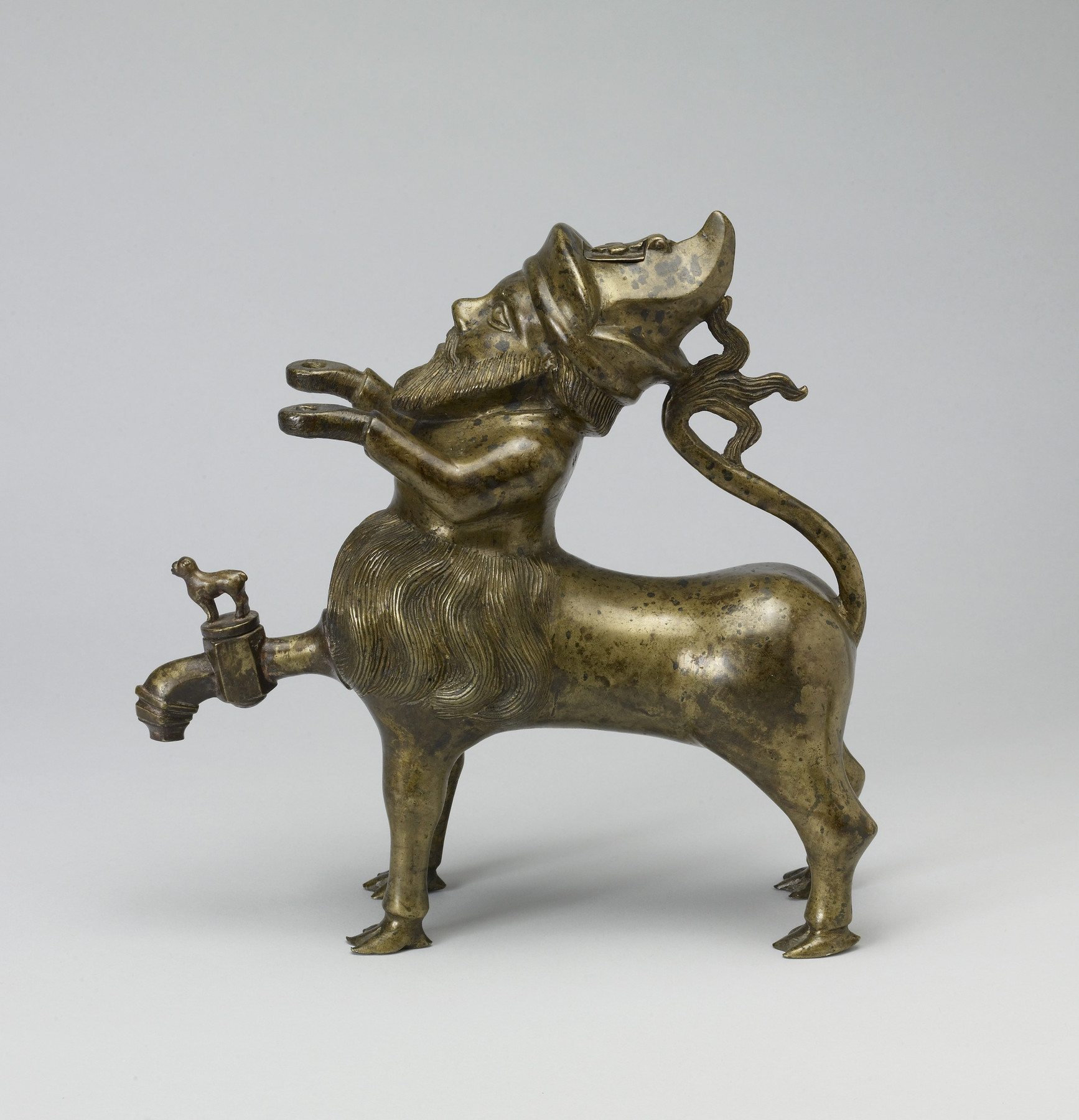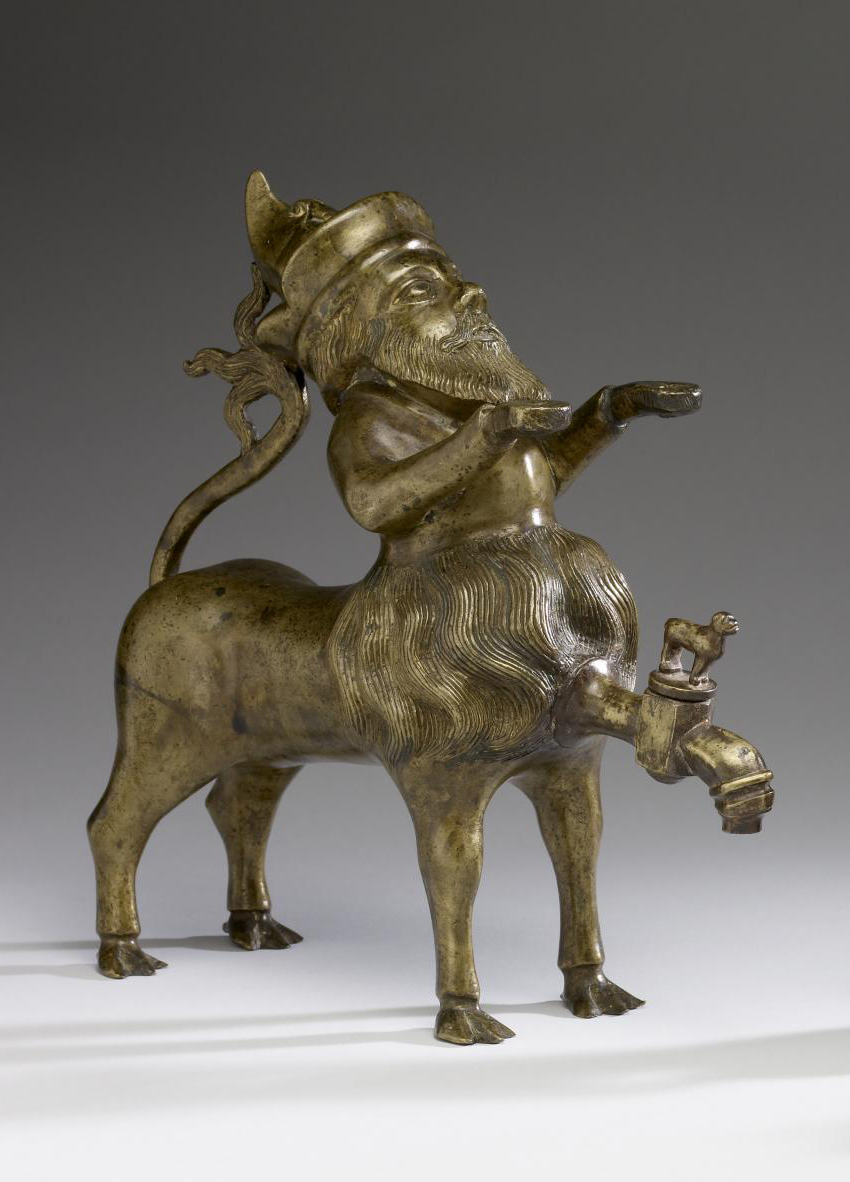Aquamanile in the Form of a Dwarf Centaur
The name of this form of pitcher derives from the Latin "aqua" meaning water, and "manus," meaning hand; it was used to wash the hands both in ritual contexts and at table. In the Middle Ages, food was eaten with the fingers so that hands needed frequent washing. This aquamanile is one of the few surviving examples to fill two purposes: holding water and providing light. The outstretched hands of the centaur (half man, half horse) would have held two candlesticks. The design of the faucet and its little mythological animal handle is of Syrian origin.
Provenance
Provenance (from the French provenir, 'to come from/forth') is the chronology of the ownership, custody, or location of a historical object.
Marquise de Ganay, née Ridgway, Paris; Arnold Seligmann, Rey et Cie., Marquise de Ganay Estate Sale, Paris, 1929; Henry Walters, Baltimore, 1929 by purchase; Walters Art Museum, 1931, by bequest.
Exhibitions
| 2016-2017 | A Feast for the Senses: Art and Experience in Medieval Europe. The Walters Art Museum, Baltimore; The John and Mable Ringling Museum of Art, Sarasota. |
| 1962 | The Arts of Man. Dallas Museum of Art, Dallas. |
Geographies
Germany (Place of Origin)
Measurements
H: 11 7/16 x L: 11 5/16 x D: 4 1/16 in. (29 x 28.7 x 10.32 cm)
Credit Line
Acquired by Henry Walters, 1929
Location in Museum
Accession Number
In libraries, galleries, museums, and archives, an accession number is a unique identifier assigned to each object in the collection.
In libraries, galleries, museums, and archives, an accession number is a unique identifier assigned to each object in the collection.
54.62

